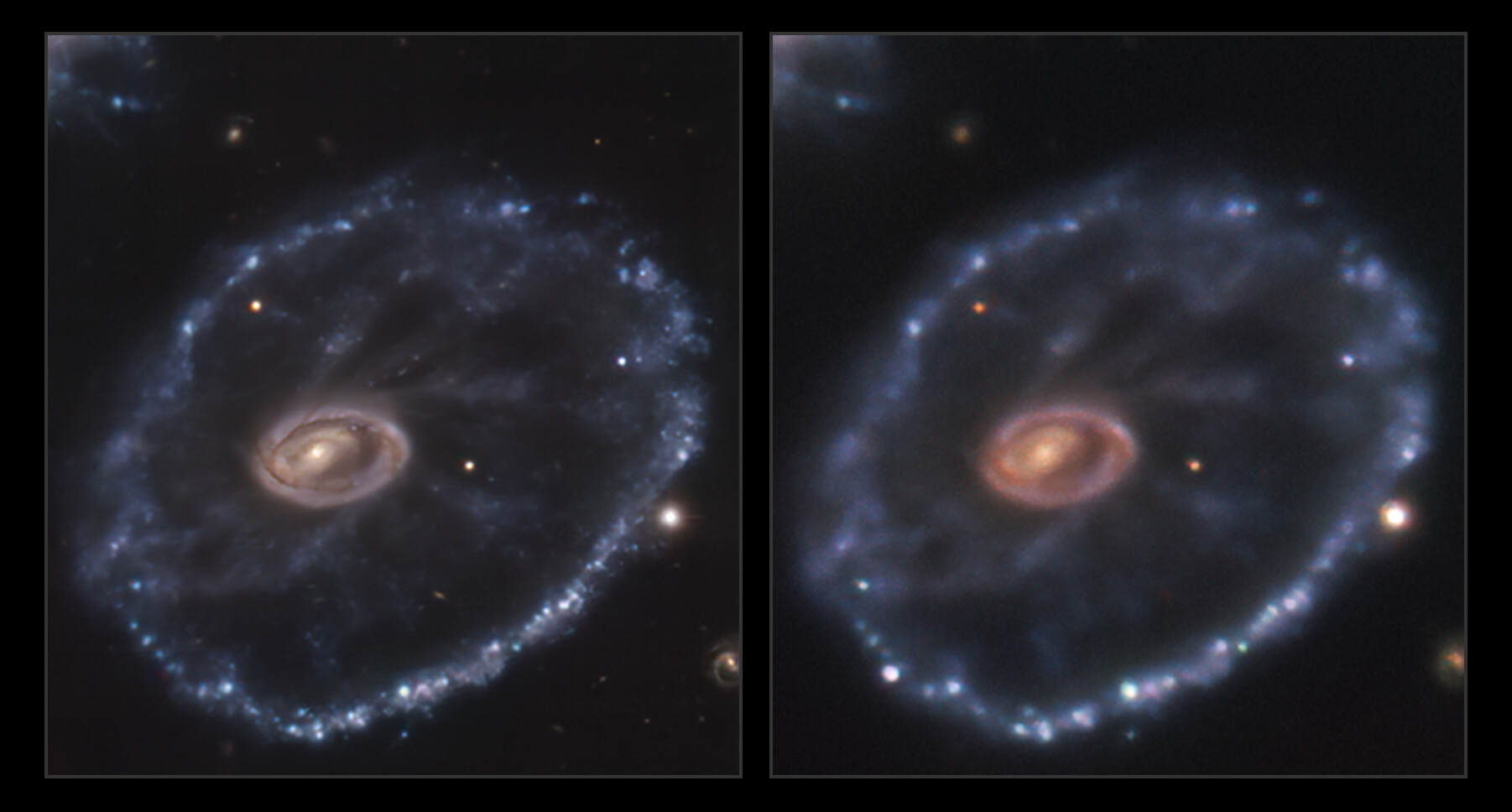The presented collage, compiled on the basis of images of the Very Large Telescope (VLT) and the New Technology Telescope (NTT), demonstrates a very unusual object of far space, known as the “Cartwheel” Galaxy. It was once a spiral galaxy that resembled our Milky Way. But a few million years ago, it suffered a collision with its companion, and as a result the galaxy acquired such an unusual appearance.

But this is not the end of the story. In December 2021, a supernova broke out in the galaxy. It can be seen in the lower left corner of the right photo obtained using NTT. The image on the left was taken by VLT in August 2014, and it demonstrates how this system looked before a supernova appeared.
The event was designated SN 2021afdx and was classified as Supernova Type II. Such outbreaks occur when large-mass stars come to the end of their life cycle and collapse. This leads to a grandiose release of energy, during which the dying luminary often shines brighter than the entire galaxy for a certain time. The outbreak can last from several months to several years.
Due to supernova outbreaks, astronomers like to say that we are all composed of stardust. In their course, heavy elements, formed in the stars during their life, are thrown into space. Further, they can become part of the luminaries of new generations, planets orbiting around them, and living organisms that can inhabit them.
According to https://www.eso.org/

